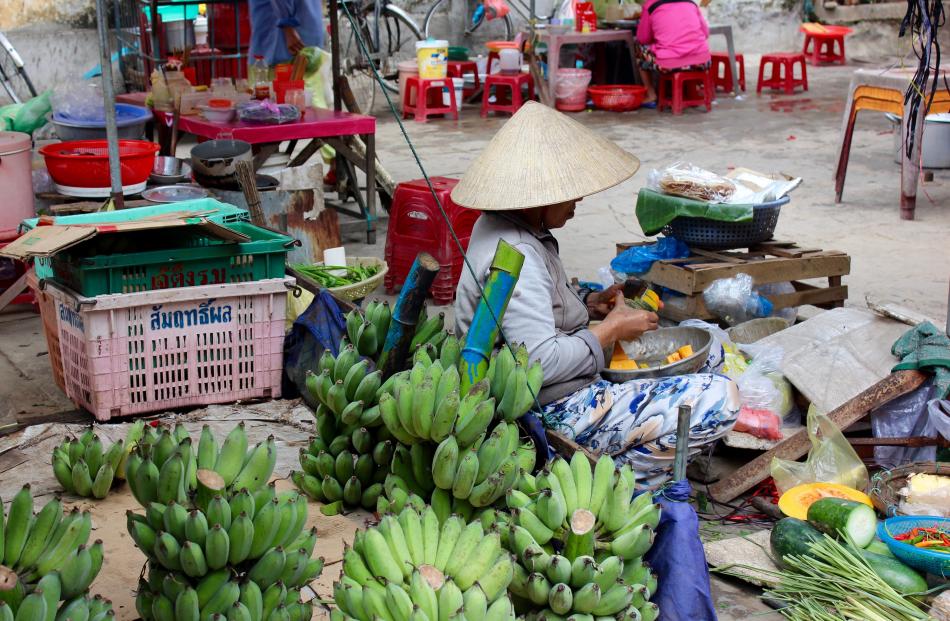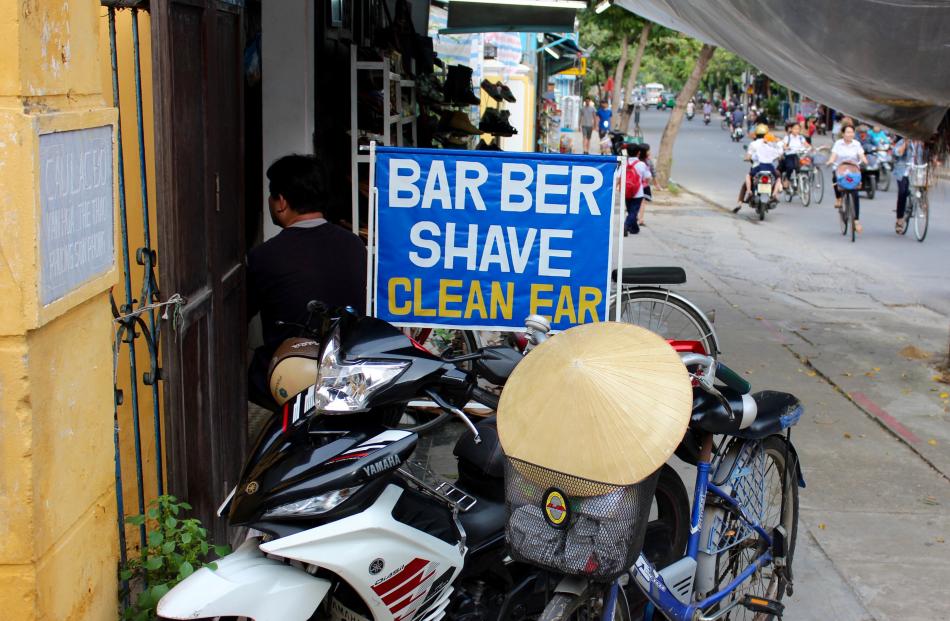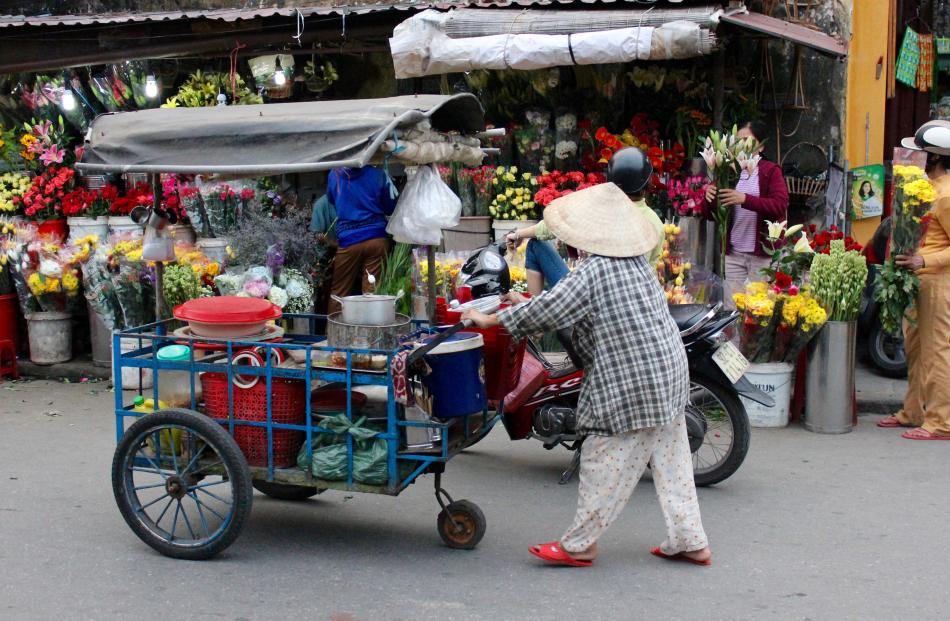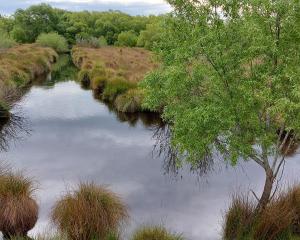Looking out the back window of my taxi, I could have sworn I was watching an episode of M*A*S*H: an United States Army jeep was being driven by a camo-clad woman surrounded by soldiers. Only this wasn’t Korea; it was Vietnam.
At the peak of the Vietnam War, more than 1500 flights landed at Da Nang Air Base each day. The US presence now at Da Nang International Airport is limited to Burger King and Tommy Hilfiger clothing.
It is surprising how few visible references to the war remain. Post-war, the US bases were quickly dismantled by locals to salvage and sell. However, what does remain is the pervasive dioxin contamination, one such "hot spot" close to the airport the result of Da Nang Air Base being the primary site for the storage of Agent Orange. And then there’s the clearing of unexploded ordnance, which frequently claims lives. It makes no sense that all American Vietnam veterans are entitled to full medical care, no questions asked. Vietnamese civilians, nothing.
Hoi An is beautiful. Originally a principal port, awarded World Heritage status in 1999, it now caters to tourists. Unfortunately, this means the culture and community has been replaced by endless retail, but what makes Hoi An so spectacular is how original and well preserved the Old Town is. Admittedly, there are a few modern additions, but overall it is like stepping into the 18th century. The influence of the early Japanese and Chinese traders has led to a distinctive, eclectic, architectural style. On narrow lanes and streets, the Chinese tile and wooden structures lend an air of mystery, while the mouth of the Thu Bon River, with its quays, bridges and canals, is equal parts charming and beautiful.
On New Year’s Eve we decided to go on the Heaven and Earth bike tour, which included a ferry ride on the Thu Bon River. The old diesel boat chugged along the river, past the humble shelters of fisherman, the early morning sun reflecting from fishing nets and turning them into golden cobwebs.
Arriving at the Song Thu river delta, we unloaded the bikes before visiting a rice noodle maker, who explained that she was the last in her family to make noodles using the traditional method as no-one was willing to continue the tradition, bringing to an end 30 years of self-sufficiency and noodle-making experience.
The next stop was at a small hand-made bamboo bridge, where we paid a toll to the family who built it. Crossing it we had three options: fall in, be impaled by the uprights banged into the sloshy marsh or gain momentum and bump speedily across what equates to raised railway tracks. The feeling of relief as we made it to the far side was immense but fleeting; there were many more handcrafted bridges ahead. We weren’t to stay dry for long.
The heavens opened shortly after, and guides Moon and Sugar quickly handed out neon rainjackets, but, by the time we made it to the roadside home coffee stall for an instant coffee laced with condensed milk, we were drenched.
Back on our bikes, we pass water buffalo grazing and tenant farmers planting the new season’s rice. Moon keeps us moving along at a hectic, faultless pace, and we are struck by how hard these tiny, young women work: there are no bike pants, impact gloves or Osprey backpacks here.
We stop for lunch at the home of a local family before visiting a traditional mat weaver. Later we get a lesson in how to paddle a bamboo coracle, in which I circle endlessly before our wiry, wispy mentor sets me straight. Pedalling on, our final stop is an arts studio where beautiful hand-carved wooden objects have been inlaid with mother-of-pearl.
I purchase a Vietnamese tea jar, the maker explaining he is the last to work in this tradition as the young people have all left for the city. It seems it’s not only noodle-making that is a dying art here.
We make it back to the ferry and return to An Hoi Islet where we drop by Hoi An Roastery for a green tea on our way to the popular Streets restaurant for dinner.
Run by Streets International, it’s a non-profit company that provides culinary and hospitality training for street kids and orphans across Southeast Asia. It’s inspiring and top class. The ginger fish and beef curry’s simple, fresh flavours were addictive.
Wandering along Nguyen Thai Hoc St, we heard the voice of Joni Mitchell coming from a jukebox in a bar. Squeezed alongside the other over-aged rockers, we boogied down until the night became another year.
We didn’t take our hotel push-bikes to town the next morning because we had to buy an extra suitcase to bring home all of our shopping, including recipe books from our cooking class at Goan cooking school, one from Morning Glory, Ms Vy’s famous restaurant where we had eaten, and one from Streets. There was also the notes from our photography course, our slightly tacky, tailored jackets made at Nit, a hand-forged silver teapot and jug from a craft store and a bundle of Hoi An’s signature, silk and hand-painted lanterns.
Over eggplant hotpot and bread and butter pudding at Streets that evening we made a toast: "To beautiful Hoi An, and happiness", as we headed on to the Mekong Delta and Ho Chi Minh City.
















